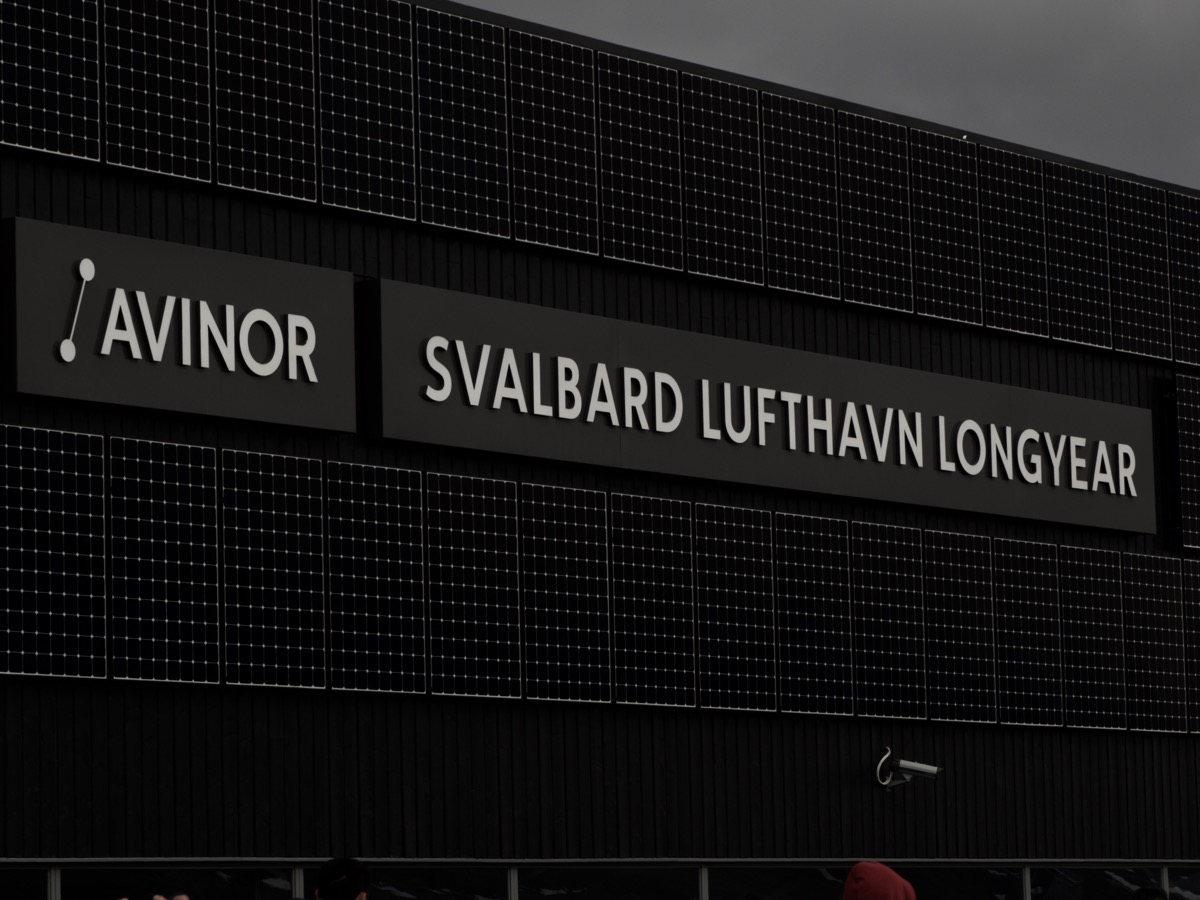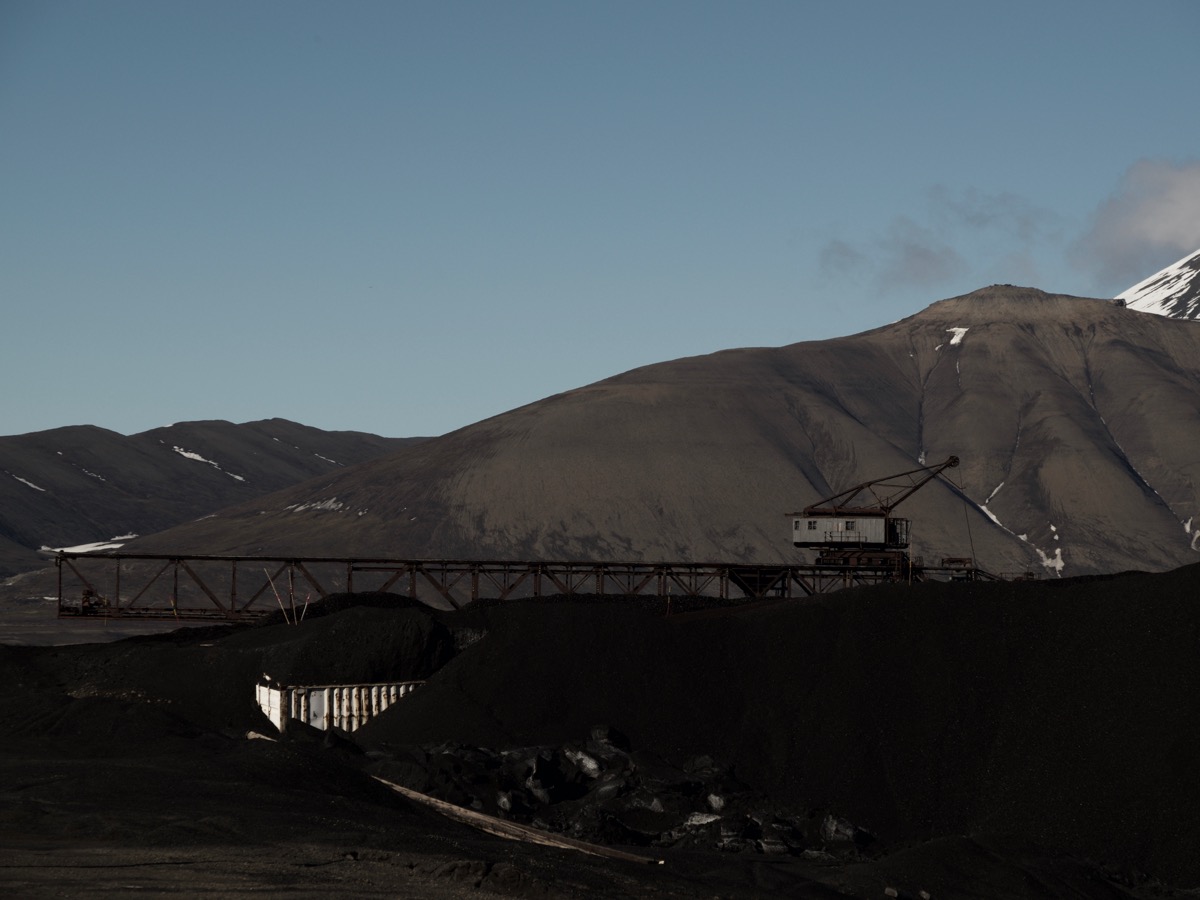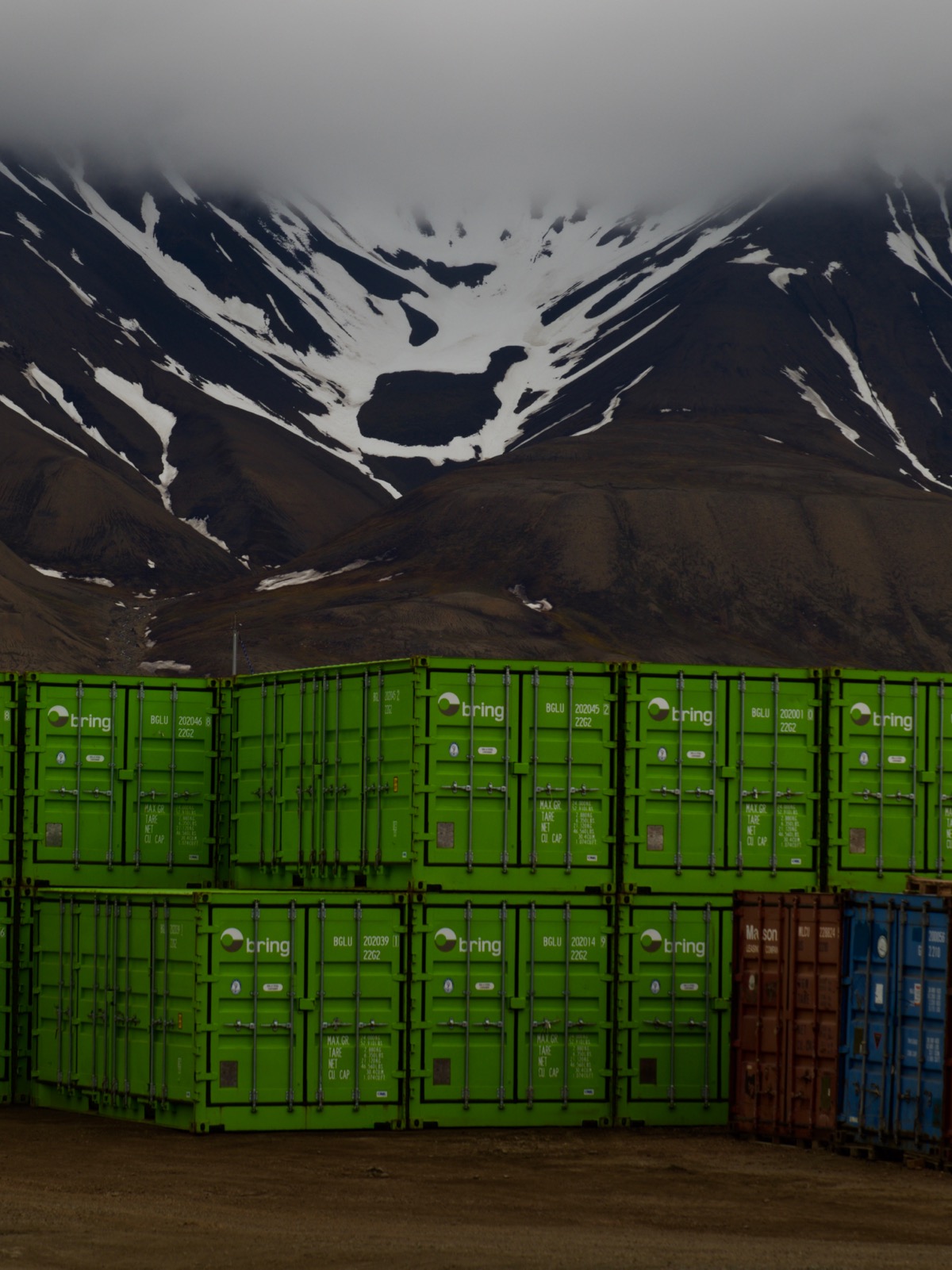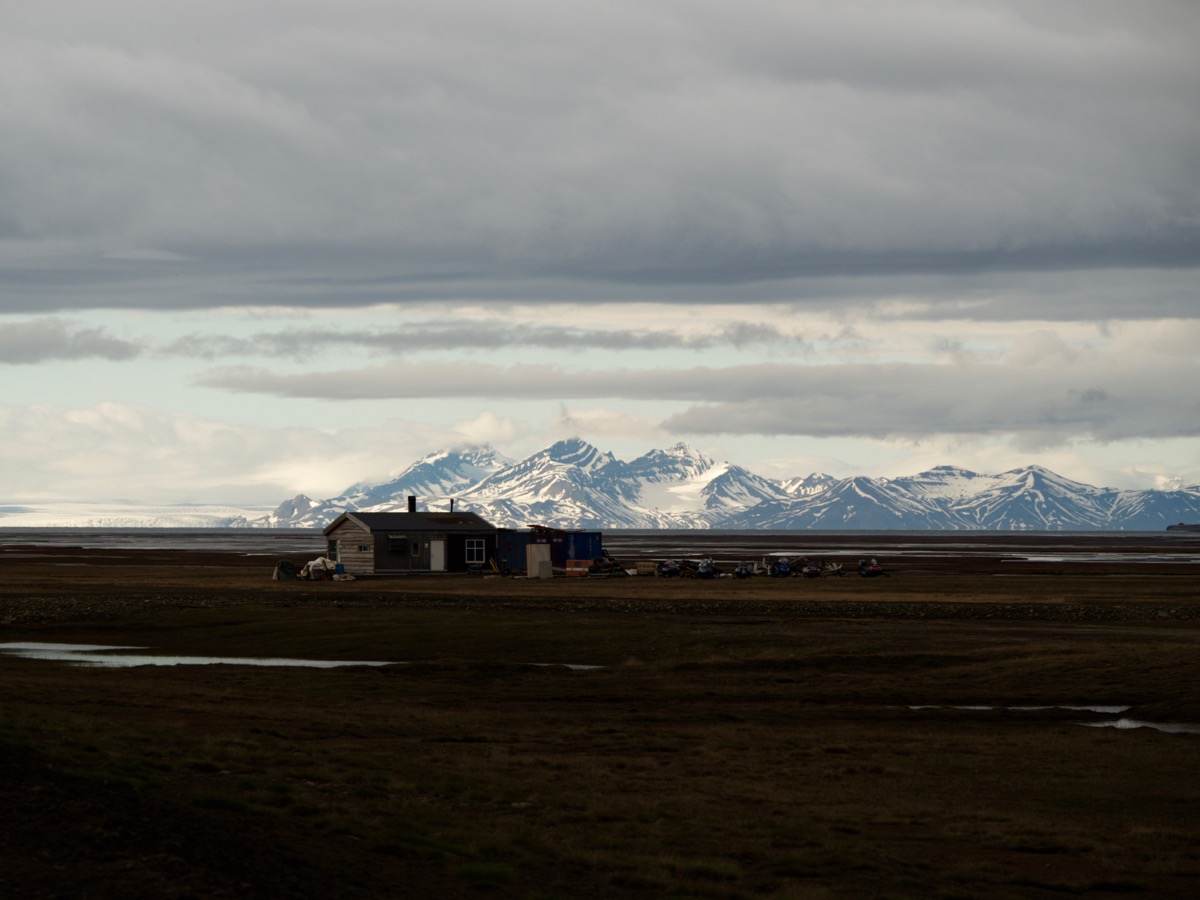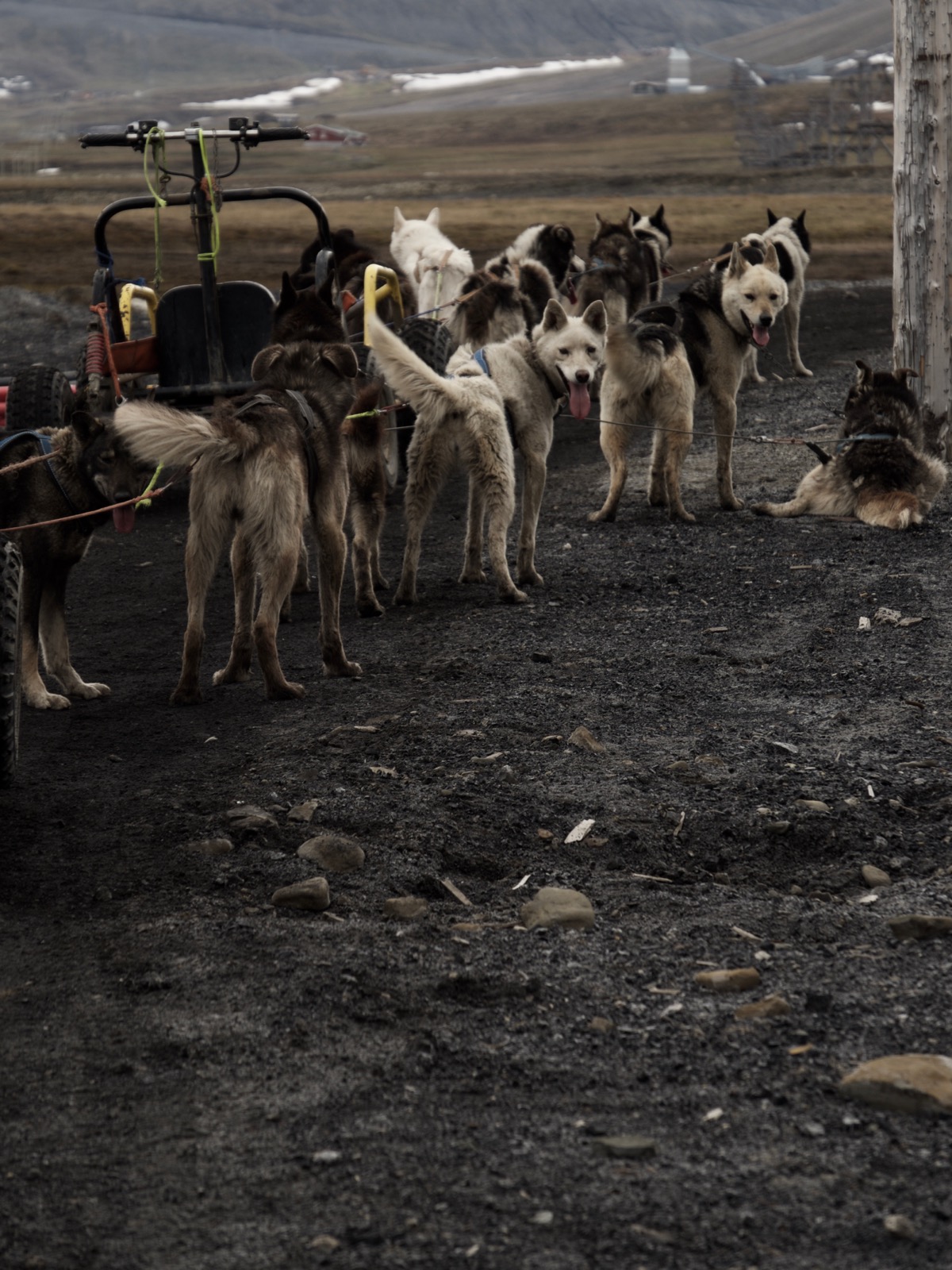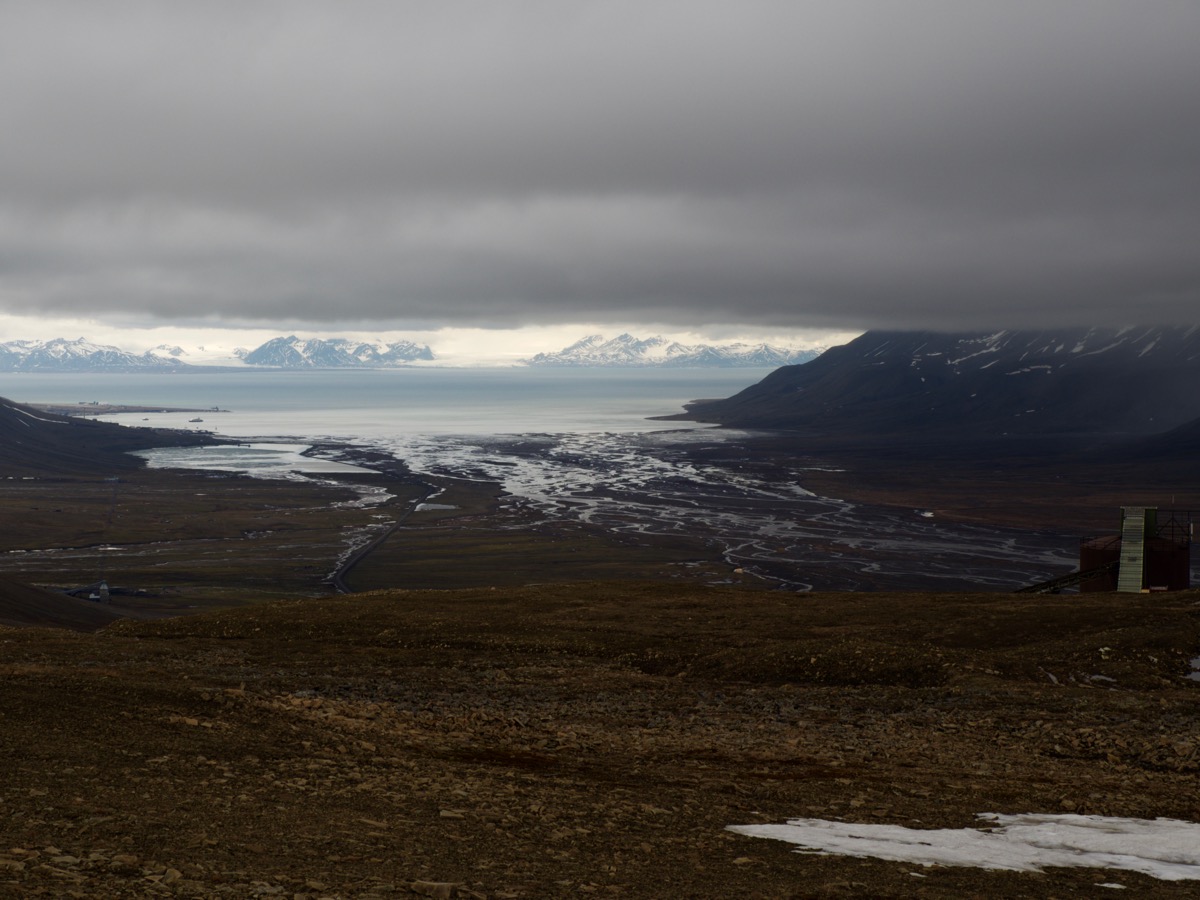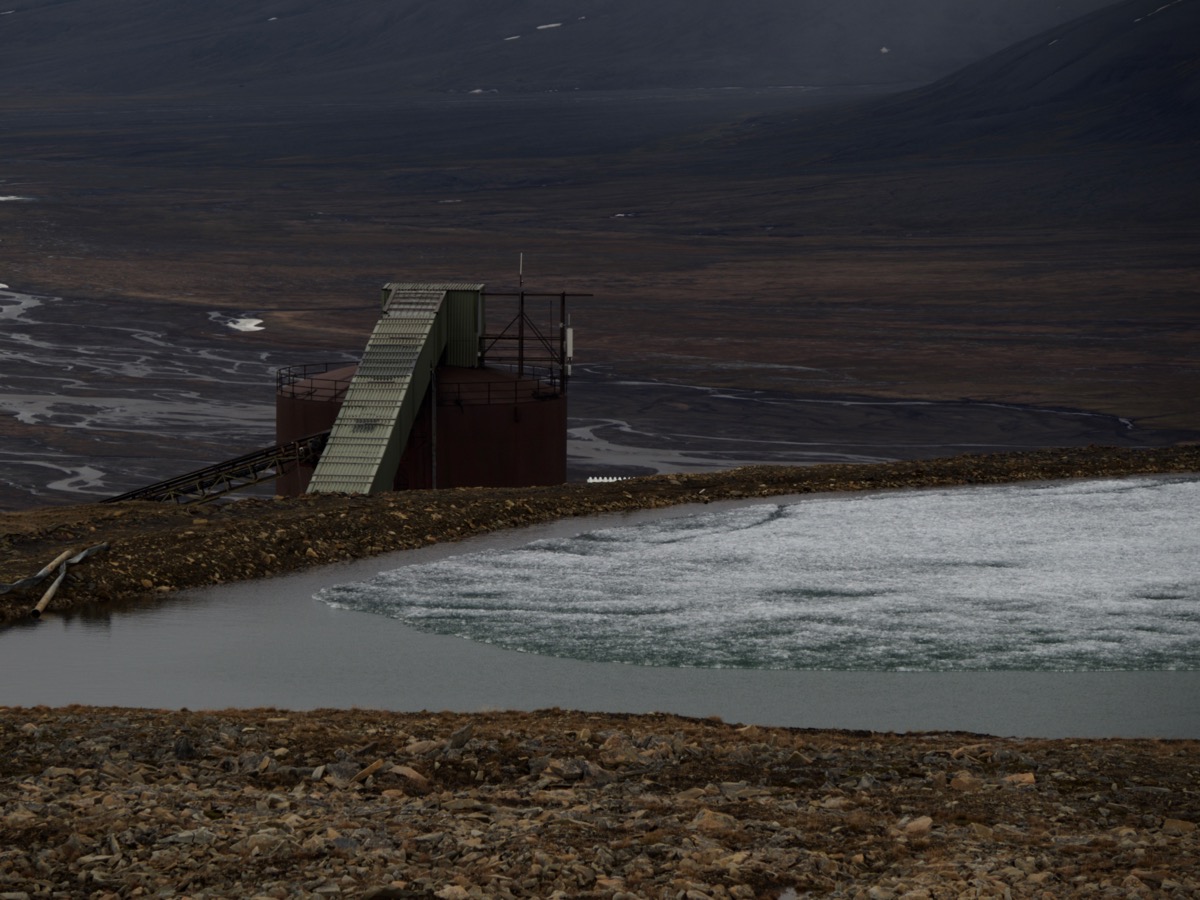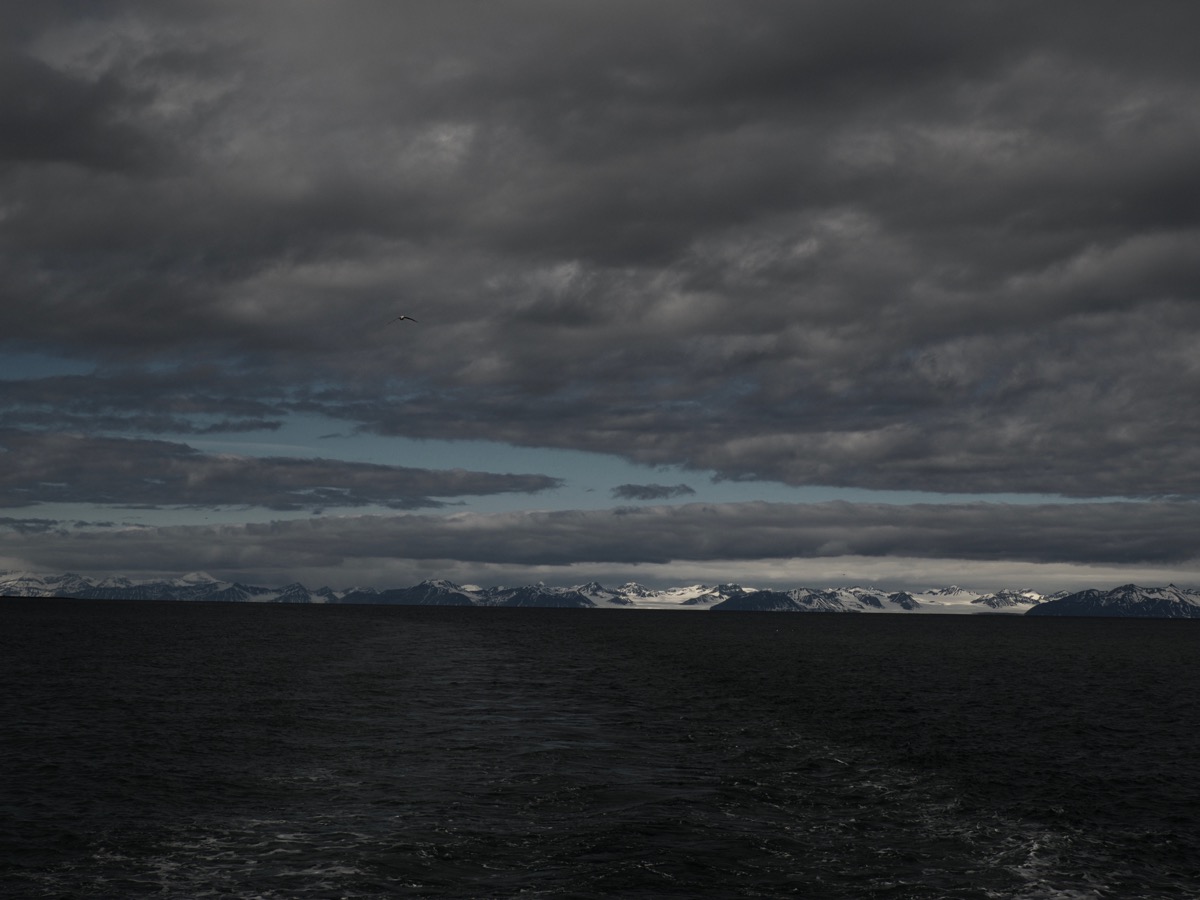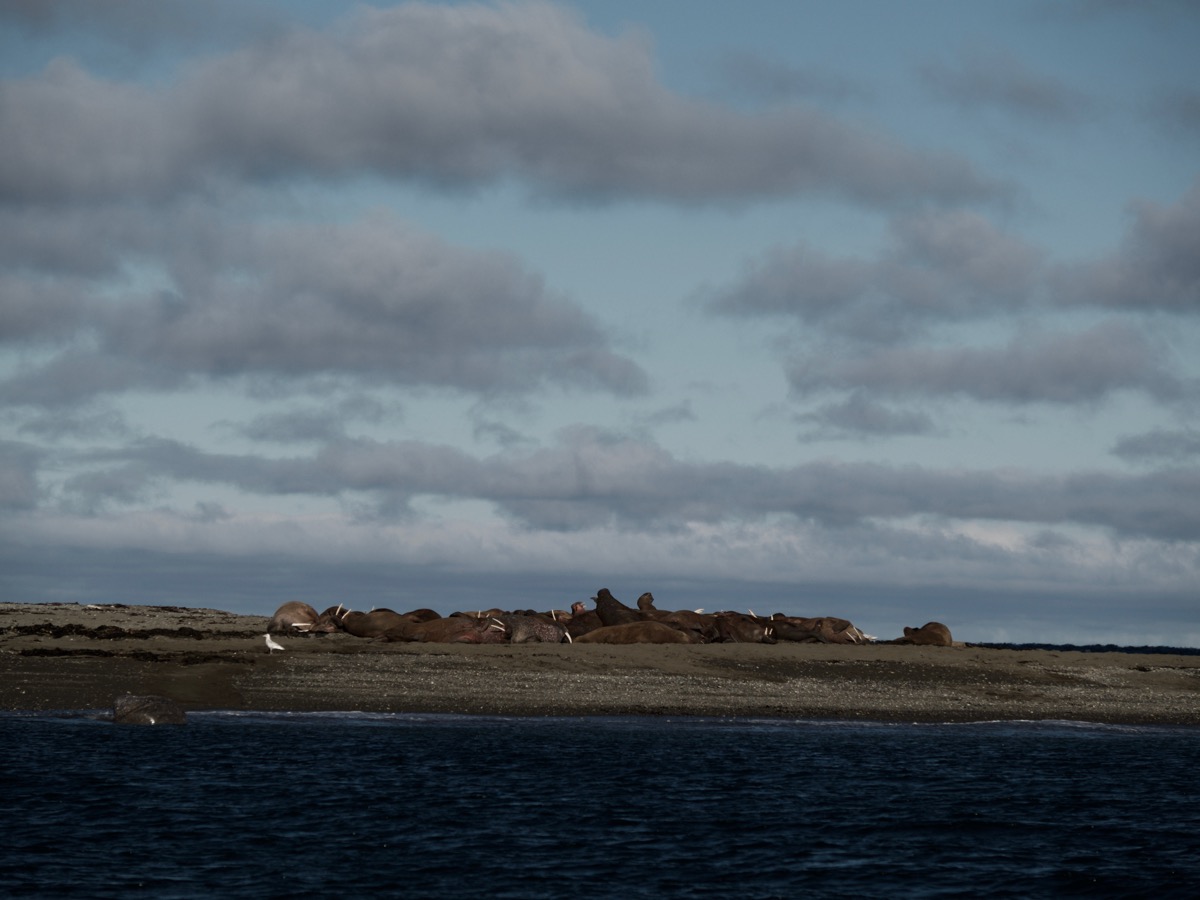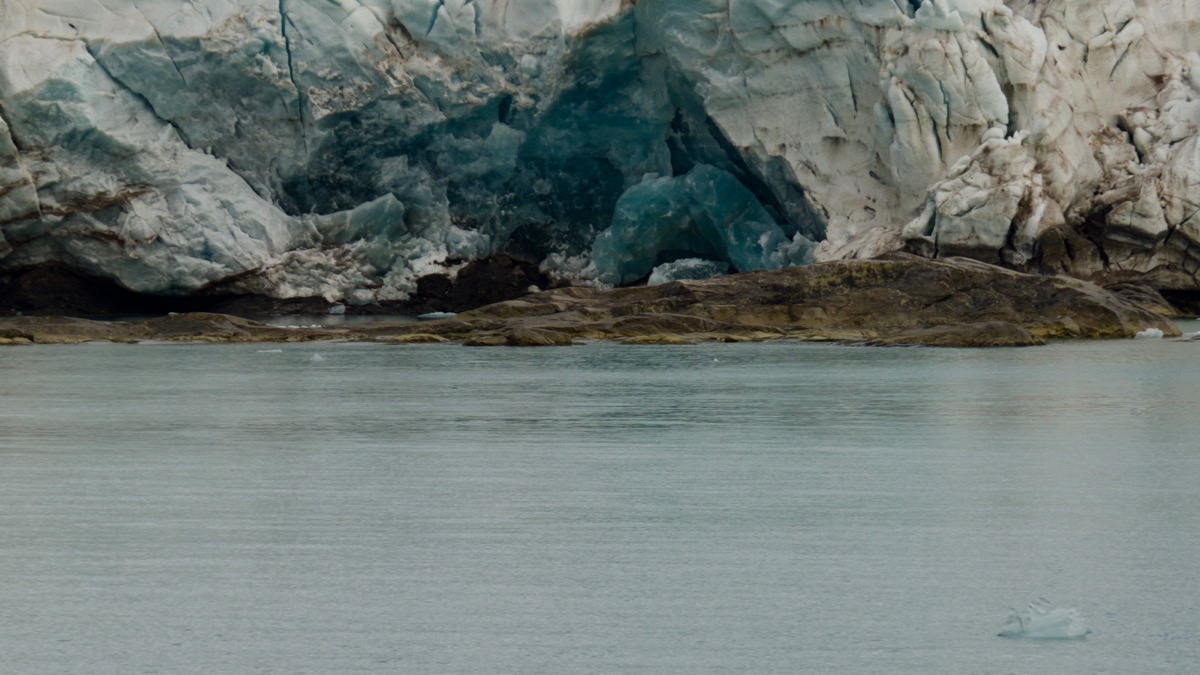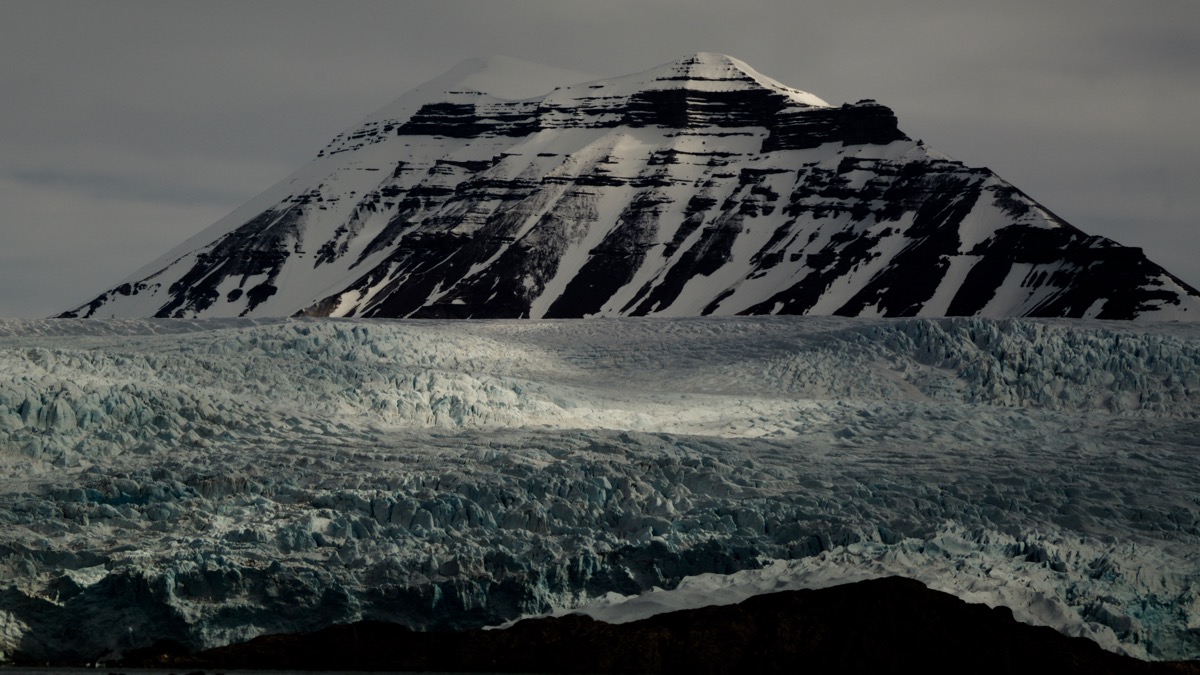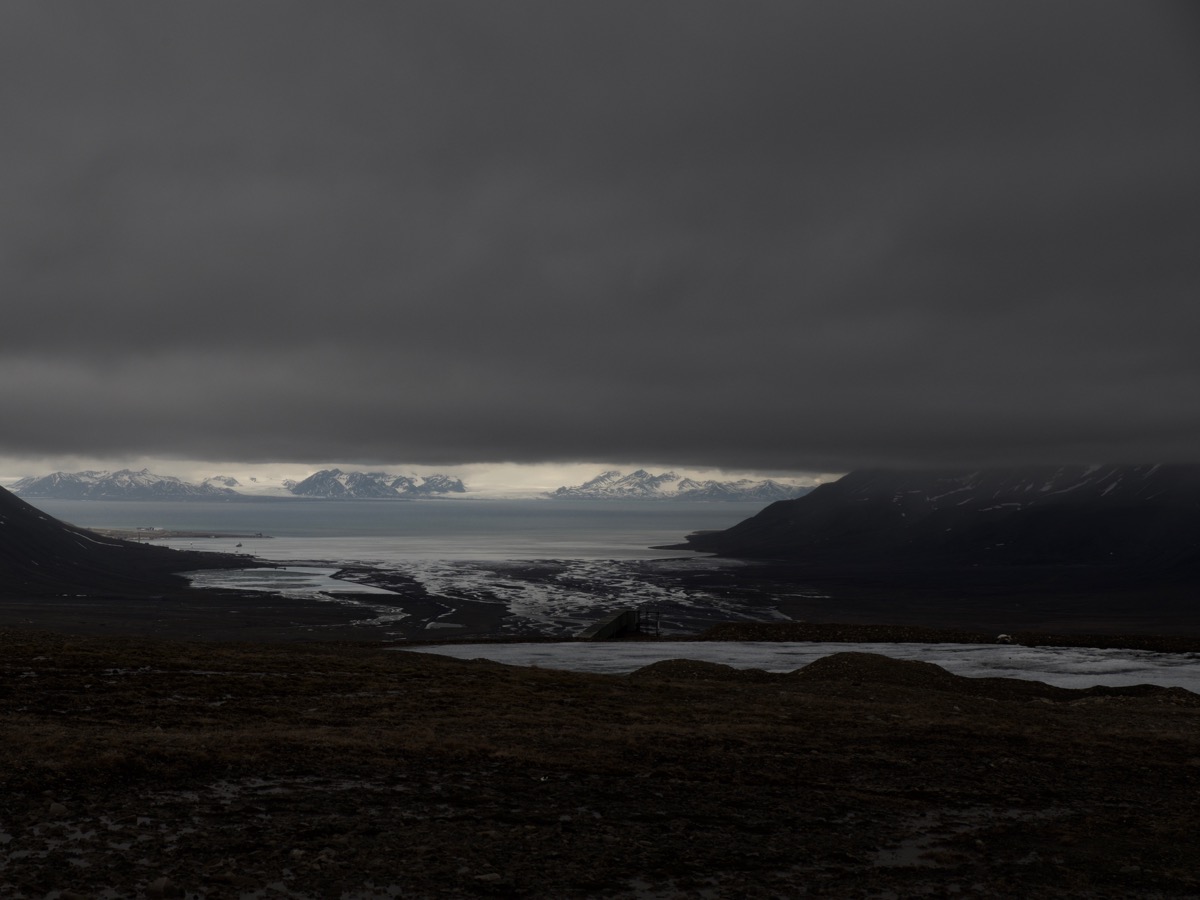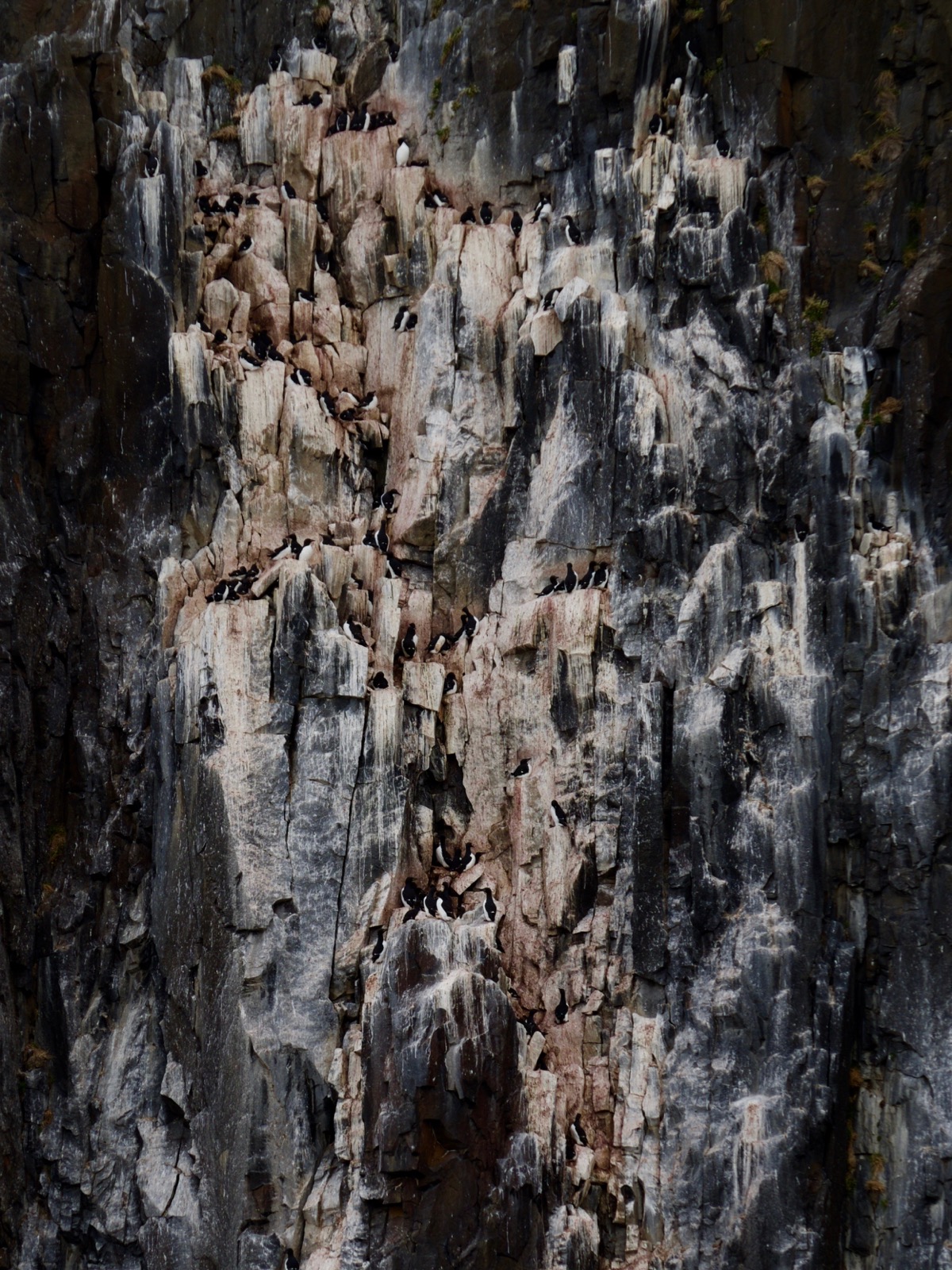Svalbard is an island 1000 Km north of Norway. Once a free heaven for whalers and mining companies it became a protected paradise with a futuristic sense of preservation of the earth. As much as Svalbard is a model on how to save the North Pole, as much it remains a fragile territory full of endangered wonders and puzzling contradictions.
While flying to the capital, Longyearbien you already realize that this is no light trip. Barren mountains and deep black and white landscape await you. It feels like all sense of color faded away to awake all other senses usually anesthetized in the richness of the warm world and the influence of modern life. There is no place for illusion at the gates of the North Pole. You need to adapt. And you need to adapt fast.
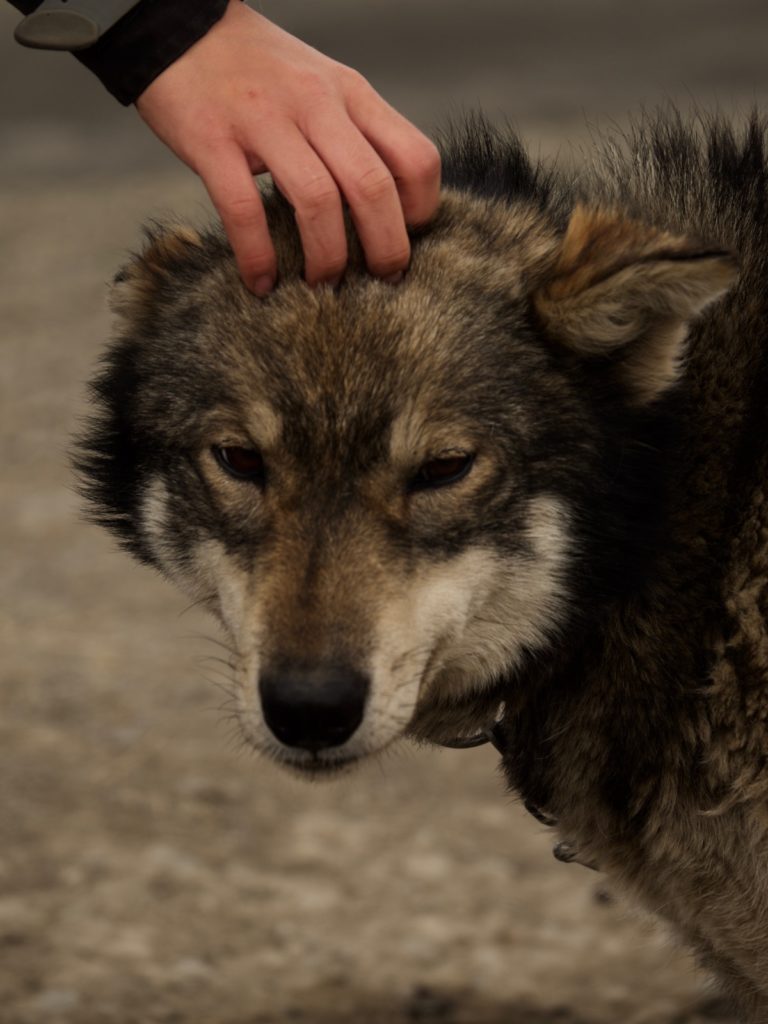 Umi is staying few days at the camping of Longyearbyen. I am used to see huskies in tropical regions of the world. Huskies have the bad luck of being beautiful creatures with the looks of a wolf and the gentleness of a teddy bear when brought up by humans. The worst of their curse is that they became of fashion. They suffer the heat in warm places where they survive under air-conditioned rooms since usually they belong to rich people.
Umi is staying few days at the camping of Longyearbyen. I am used to see huskies in tropical regions of the world. Huskies have the bad luck of being beautiful creatures with the looks of a wolf and the gentleness of a teddy bear when brought up by humans. The worst of their curse is that they became of fashion. They suffer the heat in warm places where they survive under air-conditioned rooms since usually they belong to rich people.
However, to see them in their own environment in the far north is relieving in opposition to their ill-fated brothers in the tropic. Huskies nature makes them remain outside during the whole year only taking refuge in small wooden shacks if the winds become too nasty.
It happens that a polar bear was roaming near the hut of Umi’s owner further northwest. For one thing, bears are protected creatures and should not be harmed unless there is a life threat to a human. For another, Umi would not stand a chance against a 400 kg white giant.
There are around 3500 polar bears in Svalbard alone. It is compulsory to carry a gun at all moments in the territory besides flash pistols and devices to keep bears at bay. Six weeks before going to Svalbard the governor needs to get your petition for a firearm permit and approve it. Norwegians are not fond of lunatics carrying guns around.
Tourism is well established in the inhabited part of the island and guides provided with weapons are available. Actually, it is rare to see people adventuring alone on the region with their own camping gear and guns. However, this is the best part of the adventure.
Glaciers are the normal habitat in most of Svalbard. The last firm land before stepping into the ices of the far north, Svalbard is a paradise for endless species that remain, survive or migrate from regions as far as the South Pole. Glaciers can be up to 400 meters high. Towering over the ocean, they are imposing blue and white ice mountains that seem alive.
The arctic studies university at Longyearbien provides the necessary research ground about the arctic ecosystem. Surprisingly, one of the big privileges in Svalbard is being part of a tour group. Trying to meet ends, students guide tourists around and enthusiastically share their knowledge about the arctic nature, be it animals, glaciers or things you may never have heard about before, like perma-frost.Paradise for all kinds of animal species, Svalbard carries a heavy and dark recent past of wild exploitation of all resources that illustrates well the actual race to control them in the arctic regions.
Contrary to the Antarctica which is firm land and where treaties and accords could be reached since decades, there is no such thing as a territory of the North Pole. Being just a water surface, though (for the time being) frozen, there is no room for scientists to claim this unusual territory beyond human greed. As part of the international waters, the North Pole belongs to no one. This is for the time being. The race to control those waters and their rich insides is beyond the reasoning of saving the cooling reserves of the earth. Mainly Russia seems to have very clear ideas about their rights to drill in the international waters neighbouring their territory.
Nowadays, the North Pole faces a pressing double danger.
In the one hand, the warming of the ocean waters results in a spectacular increase of species heading north in search of colder habitats. As a consequence, countries use their rights over international waters to scale up industrial fishing.
The second very worrying consequence, related to the first is that melting oceans mean better access to northern regions. In the past this matter did not need to be legally discussed since nature stopped speculation by making the region unreachable. However, Ships from Russia and Canada race since years under the auspices of the UN resolution about the sea bed exploitation in international waters. If they can prove that the big north seabed belongs to them they can claim ownership over exploitation of gas and oil in the regions.
Hidden behind ecological treaties, commercial ones are the key in this most sensitive area of the planet. I do not want to think how long it would take to destroy the earth if countries get the right to frack up there.
While Antarctica is protected through a treaty since decades the North Pole waits an UN decision to overcome its own legal traps. With Russia and the US in the Security Council the odds of getting an earth sanctuary up there look grim to me in this very moment.
Svalbard, in Norwegian territory, gives a feeling of security. Norwegians seem ready to protect their northern neighbour and Svalbard looks the proof with their tough preservation laws and customs. Their ices are nevertheless melting together with the world seed bank and the habitat of many species. Bears go further north because of the heat.
The world seems busy somewhere else nowadays. Wars and famines keep decision makers working. Perhaps if protection of the big North and of other natural sanctuaries like Amazonia would be prioritized there would be a bigger impact over those pressing problems. I wonder if policy makers are not starting the house from the roof.

